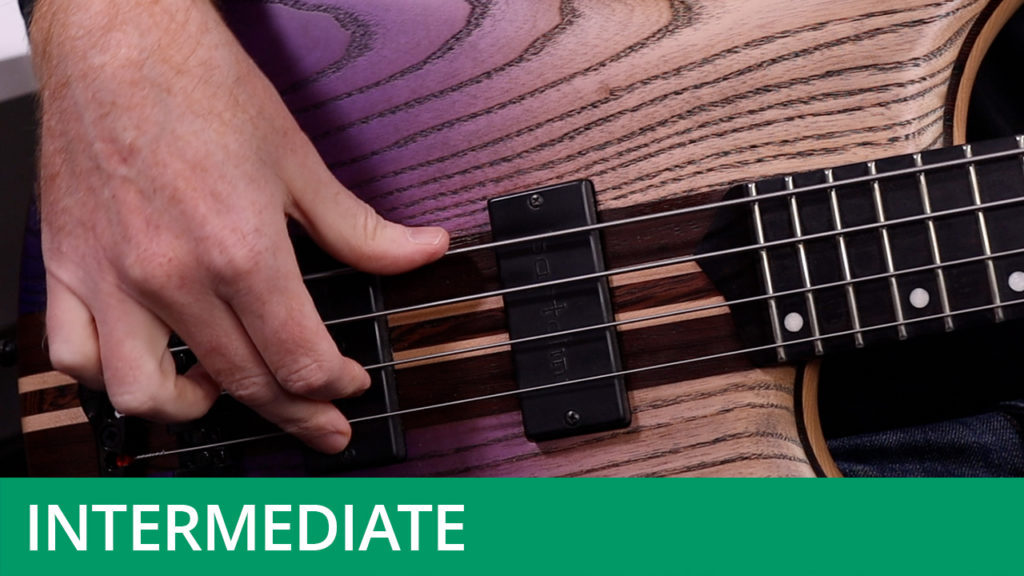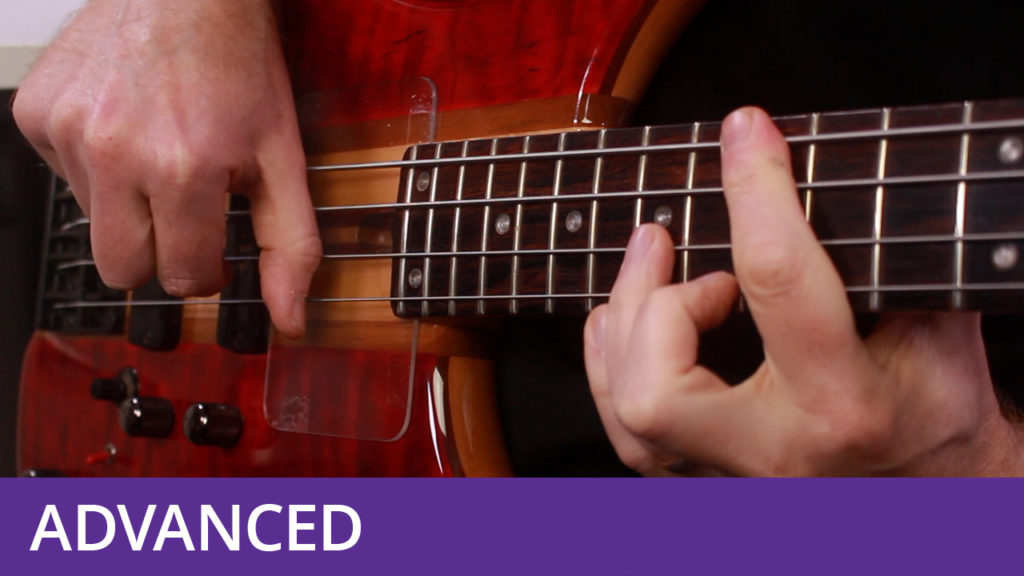Bass Lick of the Week #45
Course Duration: | Difficulty Level: 4
This exercise features a lot of harmonics and uses an 11/8 time signature.
In the first bar, the opening two notes - A and B - are played as normal notes. The B should be fretted with the first finger, and should be allowed to ring underneath the harmonics which follow. Use your fourth finger to fret the B and F# harmonics, and your third or fourth finger to fret the high D harmonic at the third fret - remember that harmonics will continue to ring even once you remove your finger from the string. In the second half of the bar, the opening bass notes are repeated again, followed by B and F# harmonics, which are this time followed by the G harmonic at the fifth fret of the G-string. You should fret this latter harmonic with the fourth finger. The challenge with this line is to allow the B on the A-string to ring whilst the harmonics are added over the top, as this enhances the chordal nature of the line. This bar is played three times.
Bars 4 and 5 follow the same format as the first three bars, but this time the low bass notes are E and F# on the E-string. All of the fingerings remain as described above.
Don’t worry about the 11-8 time signature - after listening to the exercise a couple of times, the rhythm should be quite clear to you as it is repeated in each bar.
When playing lines that feature a lot of harmonics such as this one, it’s a good idea to favour the bridge pickup on your bass, and perhaps boost your mid control slightly if you have one. Doing so will allow the harmonics to speak out more clearly, particularly those at the third fret.
This line was recorded on a Zon Sonus bass. I favoured the back pickup, boosted the treble slightly and applied reverb digitally once the line was recorded. A little reverb or chorus works really well with lines of this nature.
To download the backing track and PDF worksheet for this exercise, please visit the Free Stuff section of the website.




